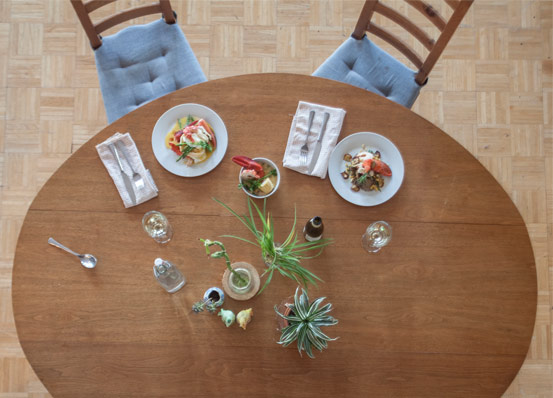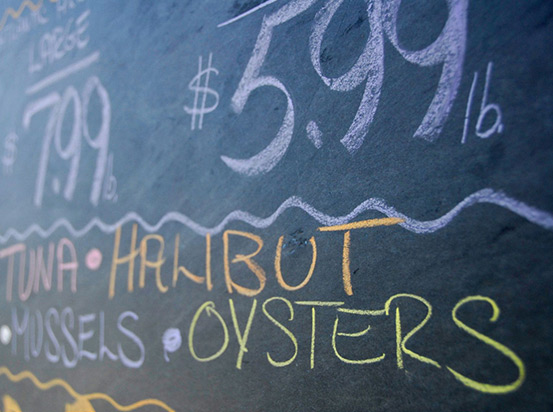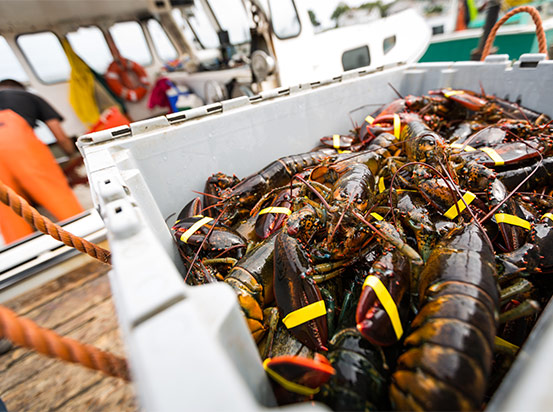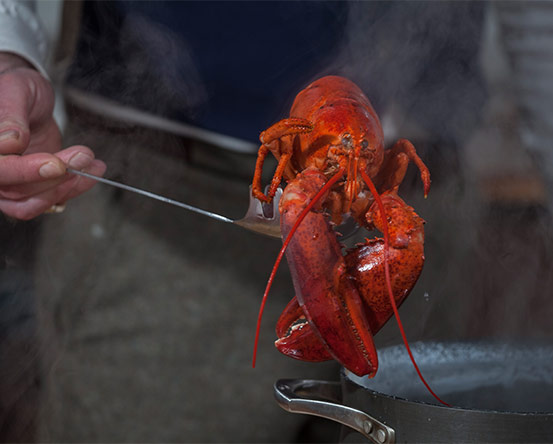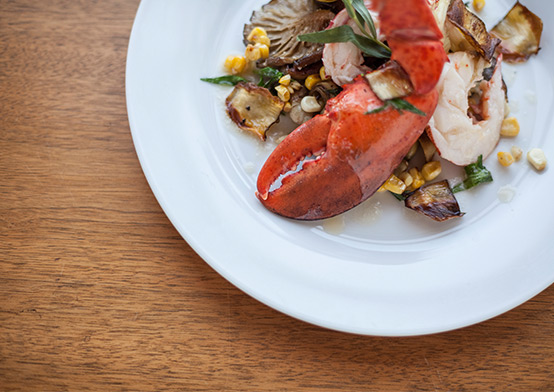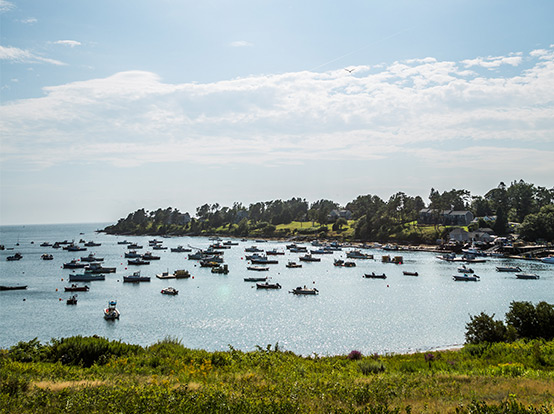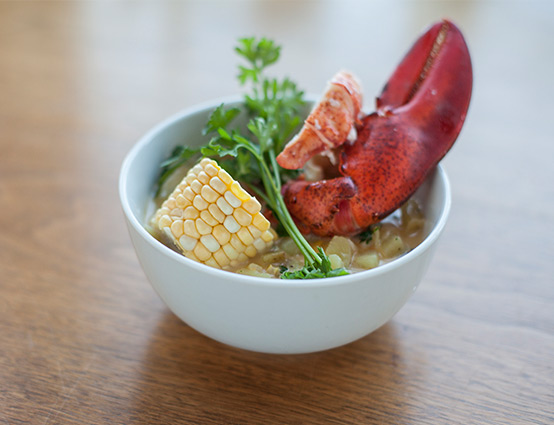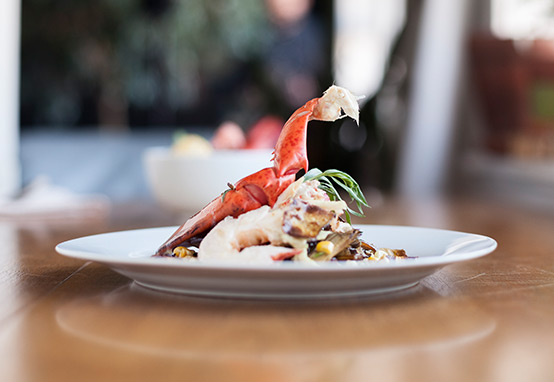An Ode to the Ocean
The Atlantic Ocean provides the people of Maine with sustenance, recreation and hard-earned livelihoods steeped in sweat and salt water. The Maine tradition of eating only fresh and local fish and seafood has its origins in necessity but has since stood the test of time, remaining a vital aspect of life on the coast. Why? Because once you've tasted fish that was just plucked from the sea, you'll never be able to go back to factory-farmed or even store-bought fillets. Because purchasing fish and seafood caught by your neighbor brings vitality and strength to your entire community. And because knowing where your food comes from is an empowering feeling that's hard to discount. From the bobbing lobster buoys dotting the Maine coast to the chefs basing their menus on what came in off the dock that day, the sea-to-table movement is thriving in Maine.
Ready to try your hand at cooking with Maine lobster? Read on for recipes that showcase our favorite crustacean.
Aside from being low in fat and packed with protein and amino acids, lobster is incredibly versatile. Throw this savory ingredient into any dish, and you've got a delicious "Maine" course.
- Roasted Corn and Maine Lobster Chowder
- Ingredients:
- 2 live Maine lobsters
- 12 ounces onion, diced
- 3 ounces bacon, diced
- 3 ounces pancetta, diced
- 2 ounces butter
- 1/2 teaspoon fresh parsley
- 1/2 teaspoon kosher salt
- 1/2 teaspoon white pepper
- 1/2 teaspoon paprika
- 1/4 cup dry sherry
- 1 pound potatoes, diced
- 1 cup heavy cream
- 1 12-ounce can creamed corn
- 2 12-ounce cans evaporated milk
- 4 ounces salted water (reserved from potatoes)
- 4 ears native Maine corn
- To taste, salt and pepper
Directions:
Boil Maine lobsters in heavily salted water. Cook 10 minutes, remove, pick Maine lobster meat and reserve shells.
Sauté onions, bacon and pancetta until golden brown with a translucent texture. Add picked Maine lobster meat, parsley and spices; deglaze with sherry and remove from heat.
In a separate pot, boil potatoes in heavily salted water. When al dente, remove potatoes, saving 4 ounces of water. Let potatoes cool and, in the same pot, add heavy cream, creamed corn, evaporated milk and salted water. Place on medium heat.
Husk corn and lightly salt, pepper and butter. Roll each ear on a hot grill, moving constantly to avoid burning. Remove from heat and, with a sharp knife, carefully remove kernels and as much liquid as possible.
Add corn, bacon, onions, Maine lobster meat and shells to liquid. Bring to internal temperature of 165 degrees, remove from heat and discard shells. Add potatoes and serve.
Source
- Butter-Poached Maine Lobster with Grilled Lobster Mushrooms, Corn and Artichoke Ragout and Tarragon Butter
- Ingredients:
- 1 Maine lobster
- 2 ounces lobster mushrooms
- 1 cup corn
- 1/2 cup chopped artichokes
- 1 cup corn stock
- 1 shallot, minced
- 1 pound butter
- 2 ounces tarragon
- 1 lemon
- Garnish:
- Artichoke chips
- Micro arugula
- Basil flowers
Directions:
Boil lobster in salted water—7 minutes for the claws, 3 minutes for the tail—and shock in ice water. Take lobster out of shell and place claws and tail in 10 ounces of butter.
Chop tarragon and fold in 4 ounces of butter and set aside.
Sauté shallot in 2 ounces of butter, add corn stock and reduce by half. Add corn, chopped artichoke and knuckle meat and 1/2 lemon juice. Season with salt and pepper.
Grill lobster mushrooms and set in lobster butter. Gently warm up butter to heat the lobster meat.
To assemble the dish:
Place ragout in middle of the plate. Take lobster mushrooms out of butter and season with salt and pepper and remaining lemon juice. Place lobster and lobster mushrooms over ragout. Spoon tarragon butter around lobster and ragout. Garnish with artichoke chips, micro arugula and bail flowers.
Source
- Maine Lobster Benedict
- Ingredients:
- For Hollandaise sauce:
- 1/2 cup (1/4 pound) unsalted butter
- 2 egg yolks
- 1 tablespoon freshly squeezed lemon juice
- Dash of cayenne pepper
- Sea salt
- 4 English muffins, split in half and toasted
- 12 asparagus spears, steamed until just tender
- 1 pound cooked Maine lobster
- 1 tablespoon butter
- 8 eggs, poached
Directions:
To prepare the Hollandaise sauce: Melt the butter in a double-boiler on top of the stove. In a small bowl, whisk together the egg yolks, lemon juice, and cayenne pepper. When the butter has melted, whisk the egg mixture into the melted butter, stirring constantly and cooking until the sauce starts to thicken. Season to taste with sea salt. Remove the double-boiler from the heat and keep the sauce warm over the hot water.
To assemble Maine lobster Benedict: Toast the English muffins and place 2 halves on a plate. Cut the steamed asparagus spears in half, and place 3 half-pieces on each English muffin half. Sauté the Maine lobster in 1 tablespoon of butter until it is heated, and then portion on top of the English muffins. Top each muffin half with a poached egg, and dollop the Hollandaise sauce on top.
Source
